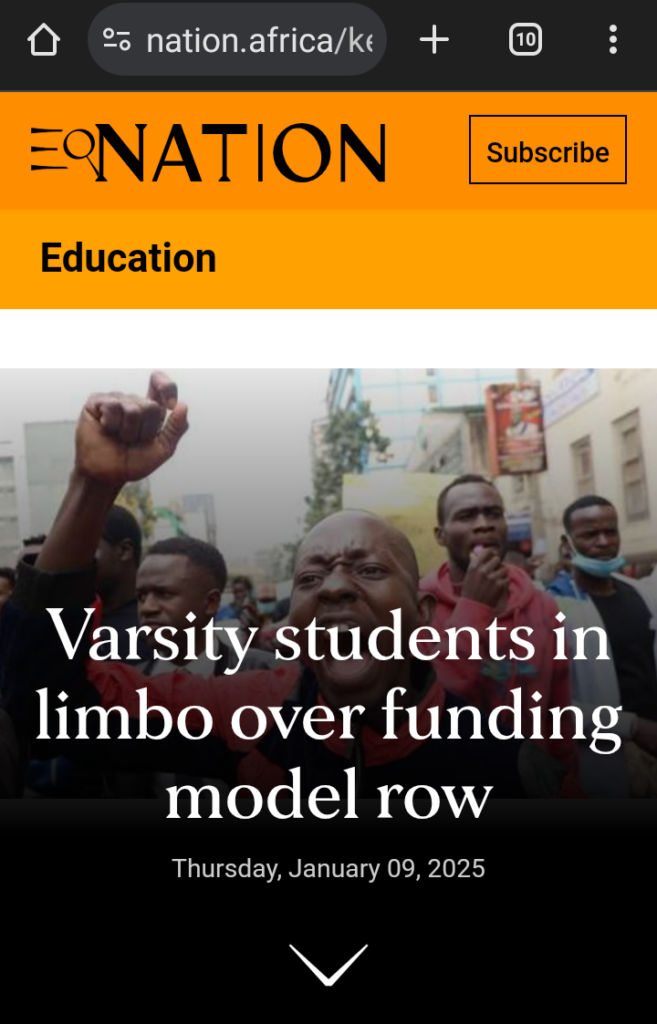University students in Kenya are facing significant uncertainty due to disputes over a new funding model for higher education.
In 2023, the government introduced this model to address rising university education costs.
However, it quickly became controversial, with critics arguing it was unfair and lacked proper public consultation.
The new funding model aimed to provide a mix of government scholarships and loans based on students’ financial needs, intending to promote equity in higher education and lessen the financial burden on families.
Despite these goals, the model faced legal challenges.
On December 26, 2024, the High Court declared it unconstitutional, stating it was discriminatory and implemented without sufficient public participation.

This court decision has left approximately 234,811 students admitted to universities in 2023 and 2024 in a precarious position.
These students are uncertain about their funding status as the new academic term approaches.
The situation is particularly dire for first- and second-year students, who were to be funded under the new model, while their senior counterparts continue to receive support through the previous Differentiated Unit Cost (DUC) model.
The Kenya Universities and Colleges Central Placement Service (KUCCPS) has expressed concern over the potential impact on students and educational institutions.
KUCCPS Chief Executive Officer Agnes Wahome noted that the government could only afford to fund each student at less than 30% of the recommended allocation under the DUC model.
This shortfall has strained universities’ finances, pushing them further into debt and jeopardizing the quality of education.
In response to the funding challenges, there are discussions about possible policy changes.
One proposal involves raising the cut-off grade for university admission to limit the number of students eligible for government funding.
Such a move could force students, especially those with C+ and B- grades, to pursue self-sponsored programs, potentially making higher education inaccessible for students from low-income families.
The uncertainty has also affected students’ academic progress.
A month-long lecturers’ strike last year extended the first semester beyond its planned duration, disrupting academic schedules.
With exams scheduled for January 20, students are anxious about their ability to sit for exams without clarity on funding and fee payment requirements.
The Kenya Human Rights Commission, Elimu Bora Working Group, the Students’ Caucus, and other stakeholders have been vocal in their opposition to the new funding model.
They argue that it was implemented without proper public participation and failed to consider the financial realities of many Kenyan families.
Their legal challenge led to the High Court’s decision to nullify the model, but a sustainable solution has yet to be found.
Government sources have expressed concerns that if the suspension of the new funding model continues without a viable alternative, public universities could face sustainability issues, potentially leading to closures.
The education budget has been shrinking globally, and Kenya is no exception.
Since last year, limited financial resources have constrained the education sector, exacerbating the challenges faced by universities and students alike.
As the new academic term approaches, students, parents, and university administrators are calling for prompt and effective solutions to the funding crisis.
The need for a fair and sustainable funding model is critical to ensure that higher education remains accessible to all eligible students, regardless of their financial background.
The situation remains fluid, and stakeholders are eagerly awaiting further guidance from the government and educational authorities.


